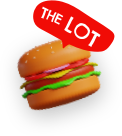An overview of “on-site” search engine optimisation
Every man and his dog wants to be on the first page of Google. With some good quality, consistent content added to your blog, in most cases it is actually achievable.
Optimising your website for Google has changed dramatically in recent years. SEO (search engine optimisation) is largely an ‘onsite game’. This means you need to ensure from the start that you choose the right platform and structure. Out of the box, WordPress is one of the best content management systems when it comes to SEO. Optimising your content will ensure you get more traffic and conversions from your website.
Here’s the stuff you should know:
Google puts priority on the following:
1. Content
The content of the page is the number one ranking factor in the eyes of Google which only wants great content. The quality of the page defines the ranking position, that is position 1 VS position 11. Start with the premise of “build great content, get found”. Think deeply about the content you create and you will make it valuable, comprehensive and useful. The goal here is to produce content that someone would want to link back to or share.
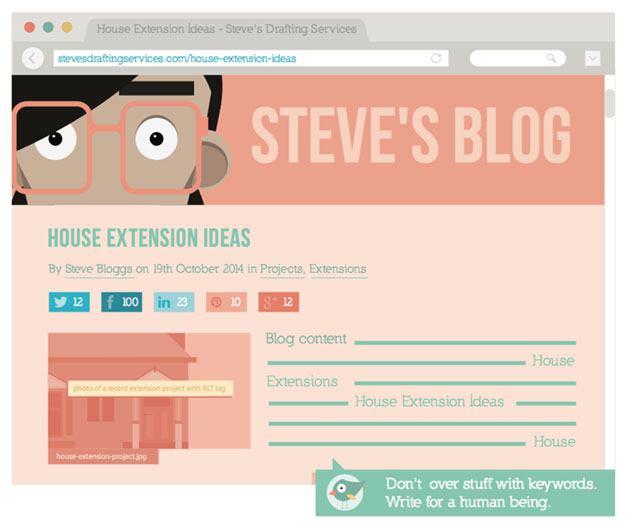
Follow these guidelines:
- Ideally your page contains text, images and video.
- Keep your content very narrow and relevant to one specific topic. One page, one message.
- Your content should not be over manipulated or stuffed with keywords. As long as the content is written for a human being and isn’t ‘stuffed’ with the same keywords over and over again then you are off to a great start. Your subject should be mentioned a few times throughout the content in a conversational manner.
- Start with a philosophy of ‘provide value’ and you will be fine.
2. Page titles
The page title is the main way of describing the page or post. The page title should be descriptive and unique for every page. It should be limited to 55 to 60 characters. Your subject should be mentioned in the first words of the title tag. It shows up in a browser similar to this:

Title tags then show up in the Google search results similar to this:
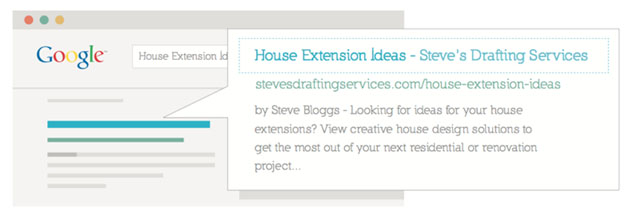
3. Meta description
In the Google search results, the small block of text is typically the page or post’s ‘meta description’. If this doesn’t exist, Google will just create one for you. Ideally this is a concise explanation of what the page is about. The description should be between 150 and 160 characters in total. The best rule of thumb is to create compelling copy that contains the keywords that relate to the page. Ensure you don’t have duplicate meta descriptions across other pages in your site (they all need to be unique). Sometimes the date will also be displayed in front of the meta description.
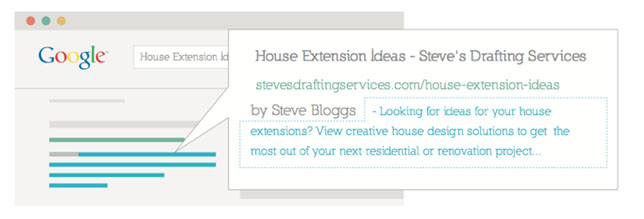
Note –Title tags and Meta descriptions are handled extremely well by an plugin called ‘WordPress SEO by Yoast’
4. URL
The URL (Unique Resource Locator) is the address of the page.
For example https://www.wpbeginner.com/wp-tutorials/seo-friendly-url-structure-for-wordpress/
WEBSITE > CATEGORY > POST NAME
WordPress covers off on this as a default feature (the setting just needs to be tweaked). It gives you full control of how your URL (or permalink) is displayed.
This gives Google clues about the relevance of the content based on the hierarchy. It is a really great idea to include the subject or keywords of the blog post in the URL.
5. Categories and tags
Using categories and tags on your WordPress website will increase the likelihood of your content getting found.
Categories allow for broad groupings of your posts. These are hierarchical in nature.
Tags are similar to categories but allow you to be very specific. These are intended to be two or three words at most. Tags help search engines get a better understanding of your post and how it relates to different topics.
For example:
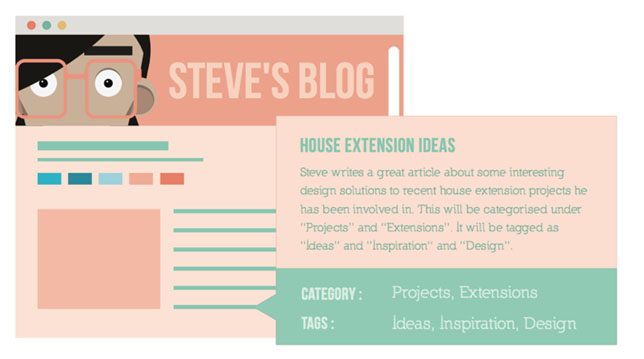
6. Title and ALT tags
Page/post title
Your page title should be set up as a H1 tag. This should be built into your website by your developer. The primary thing to remember is to include the subject in the title of the post as per this example:
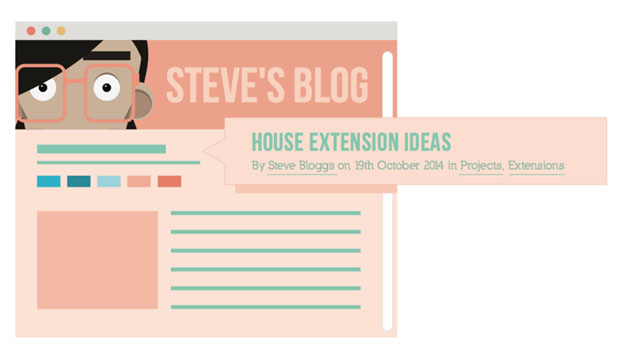
Image optimisation
Your image has the opportunity to appear in the Google search results. Google reads all elements on the page including images. While Google can’t see the image as humans can, we need to be descriptive and tell it what the image is about. Things such as the file name and the ALT tag are important. In other words, give any pictures real names that align to the content. So instead of uploading ‘DSC000023.jpg’, rename the picture as ‘steves-moustache.jpg’ and upload the file.
The ALT tag allows you to specify a text description if the image isn’t available. The image you insert into your post should be relevant to the content. Insert your subject into the ALT tag when uploading an image via WordPress.

Sharing your content
Social sharing widgets
Part of the build process should include a social sharing plugin or ‘widget’ on your page. This allows users to one click ‘like’ or ‘tweet’ your post right from your website.
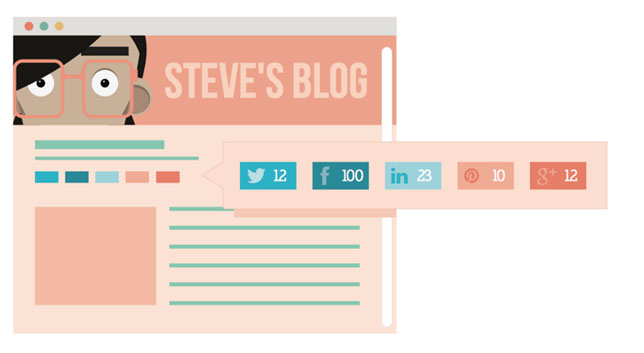
Sharing your content
With all of the previous tools in place and used, you can now get your content in front of your ideal customers through a variety of different platforms. No two businesses’ social media presence is the same. For example, it may be more appropriate for a draftsman to be more active on LinkedIn than on Facebook. This needs to be adapted to your business but the premise is the same for all social media options. Provide a link back to your blog post via your social media platforms. This will make both Google and your audience on the social platforms aware of your content, and hopefully they follow the link back to your website.
Here is a checklist for elements to include in each of your blog posts. You ideally want to:
- ensure your post has been ‘on-site’ optimised
- include video (hosted on Youtube.com and embedded on your page)
- Facebook ‘Like’ your post
- share your post with your Facebook community/page
- tweet link via Twitter
- include a Twitter feed widget (embedded on your site)
- share your post via the Google +1 button
- pin on Pinterest
- share on LinkedIn
- place photo on Instagram with URL in the description
- announce your post via your email newsletter.
The end result is your posts get indexed in Google!
